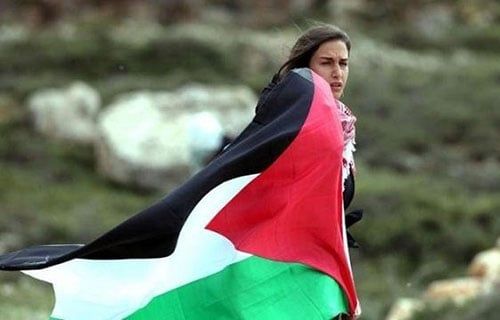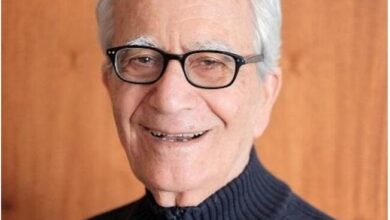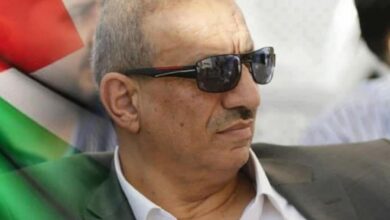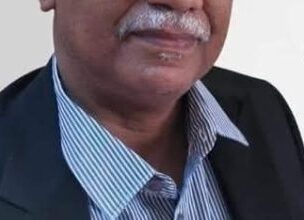Resistance of Palestinian Women By Tariq Abdel Latif Abu Ekrama-Sudan Translated from Arabic by Ibrahim Ebeid
By Tariq Abdel Latif Abu Ekrama-Sudan

Resistance of Palestinian Women
Bu Tariq Abdel Latif Abu Ekrama-Sudan
Translated from Arabic by Ibrahim Ebeid
Introduction: “When Life Turns into a Quiet Resistance that Defies Nothingness”: In occupied Arab Palestine, where women trade daily between siege and tenderness, heroism is measured not by the number of shots, but by the number of times they have redefined the meaning of “survival”. There, in the distance between the ruins of the house and the dining table, another resistance is born, a resistance that does not reverberate in the news, but flows in the mothers’ milk, in the sound of the bedtime story, in the school’s insistence on opening its doors despite the destruction.
Palestinian women do not stand before the world as a crying victim, but as a creator who builds a future from the wreckage of the moment. Life is not practiced as a biological habit, but as a silent protest against a settlement project that wants to empty it of meaning. She gives birth not because she is a woman, but because she realizes that every child born is a slap in the face of oblivion. She learns, not because she is an employee, but because she knows that the mind that does not wash is the last fortress that does not bomb.
Resistance is not always what is seen. Sometimes, it’s in a whisper, not in a shout, not in a pot, not in a cannon. In the song that a mother sings to her child as he flies over them. In those everyday details that keep the idea alive even when it is prepared on the body.
1. Motherhood as a Geography of Identity and a Statement Against Abolition: (The Womb That Resists Erasure: Birth as an Existential Statement): Birth in Palestine is not a purely biological act, but rather a declaration of the continuity of the self in the face of a project that accumulates maps instead of embryos. Every child born there is not just a new body in a crowded world, but a new witness to a reality that the enemy wants to be forgotten. The Palestinian womb is not born for the sake of population counting, but to retain the name, the place, the memory.
In the camps, where only the name of the homeland remains, birth becomes an act of restoration. A child is born not to start from scratch, but to continue a life that has been forcibly cut off. He is born laden with historical tasks, as if he were a soldier in a silent army, whose only task is to be alive, present, indelible. The female body in Palestine is the last remnant of national sovereignty.
2. Food as an Archive: (Palestinian Cuisine as a Museum of Living Memory): When Palestinian women prepare a meal of za’atar and bread, they do not cook only to feed, but also to remember. Every recipe practiced there is a chapter from an unwritten book. Salt, oil, ghee, and wheat are not only ingredients for food, but also elements of a missing agricultural scene, a witness to the land that was confiscated.
Palestinian cuisine is not only a home space, but also a symbolic line of defense, in which a battle against cultural assimilation is waged. Cooking is an act of remembrance, and the table is not only a place to eat, but also to evoke villages that are no longer cultivated, and the fields that no one cultivates anymore.
When a mother whispers in her son’s ear, “This flour is from the wheat we used to grow, before they confiscated the land,” she is not teaching him a food recipe, but a history that has no place in the curricula of the usurping and occupying Zionist entity. It implants in him, through the bite, an anti-erasure memory, a nostalgia that will resist cancellation even if he does not see the earth with his own eyes.
3. Giving birth to resistance: When a child becomes a document against displacement: Gaza’s staggering statistics — 78 percent of women consider childbearing to be a form of resistance — are not evidence of a surplus population, but rather an excess of willpower. Every child there is not only greeted with an emotional welcome, but as if to say to the world, “We are still here, despite the bombardment, despite the siege, despite the walls, despite the displacement, despite the starvation.”
Every child is a high “yes” in the face of every “no” issued by the occupying Zionist entity: no to return, no to identity, no to survival. Women who give birth under the heavy shadow of airplanes do so not only out of defiance, but because they know that the occupation’s projects fail when they collide with the Palestinian mother’s ability to survive.
4. The hidden price: (the daily cost of resistance): Behind every child that is born, every meal that is prepared, and every lesson that is studied, there is a price that the world does not see. Palestinian women pay the tax for their hidden resistance in the form of:
a. Arrests: According to the report of the Prisoners’ Affairs Commission (2023), 150 Palestinian women are arrested annually, 80% of whom are mothers, and their children are used as hostages to pressure them.
In. Mental Health: A study by Birzeit University (2022) indicates that 65% of mothers in Gaza have PTSD due to constant fear for their children.
T. Self-sacrifice: Many women prefer to postpone treatment for chronic diseases or higher education to ensure family survival.
This resistance is not a free tournament, but a daily choice between survival and collapse.
5. How History Cooks: (The Kitchen as a Resistant Memory): In the absence of archives, the spoon becomes a preservation tool. Palestinian food teaches children more than history books do. Thyme becomes an identity, and sage is a resistant memory. When a mother prepares a Chinese embryo (couscous), she does not satisfy biological hunger, but rather satisfies a symbolic hunger for an unforgettable land. Every time mothers purify lentils or rub mallow leaves, they are not preparing a meal, but renewing a vow.
This resistance is not exclusive to Palestine, as in every occupied or exhausted Arab land, women redefine heroism. Iraqi women, who lived under national rule and then under occupation, fought a similar battle to preserve identity. In Sudan, where women sparked the December 2018 revolutionary uprising, mothers have become leaders of the revolution, studying the art of peaceful resistance while cooking for sit-ins. They did not wait for freedom, but made it with their own hands. From the sit-in of the General Command to the bio-resistance committees, and in the displacement camps where the war is intensifying, Sudanese mothers are turning from victims to survival makers. Among the wind-resistant shelters, they organize “sand schools” under trees, distribute a little food to the most, and write birth certificates on used paper so that their children are not erased from the existential record. They are the ones who memorize the names of the burned villages in songs that they sing to children, so that the memory does not die with the death of the walls. In these harsh spaces, Sudanese women are redefining resistance: it is not necessarily facing tanks, but the ability to create life where there is nothing but death. In Syria, where the war has torn apart the fabric of the nation, women have stood as guardians of life. Syrian women have turned rubble into schools, fear into children’s songs, and the diaspora into platforms for documentation. Resistance here was not an option, but a daily necessity for survival.
6. From Palestine to Iraq: (Motherhood as a Thread of Resistance Sewing Geography): Palestine is not the only place where women have turned memory into a weapon. In Iraq, where the U.S. occupation destroyed infrastructure in 2003, women found themselves facing a similar battle in preserving identity from dissolution. While the Palestinian woman resisted with birth and education, the Iraqi woman resisted by preserving the heritage and language, even under bombardment.
7. Iraqi women as a memory of resistance under national rule: In Iraq, when the homeland was still standing, women were not a subordinate element of the state project, but rather one of its pillars. Under national rule, Iraqiya was not only defined as a “mother” or “wife”, but as a citizen who carried a gun if needed, and held a pen to write, teach, and manage. She studied at universities, piloted airplanes, and was elected to the National Council, not as an exception, but as a basis for a vision that believed that women’s liberation was a pillar of the Arab nation’s liberation project. She was not just an accompaniment to the man, but a counterpart to him in the construction and blood arenas together.
When the country was besieged, this flame was not extinguished, but it was embroidering flags waiting to return, training its children in eloquent language, and hiding the banned books among the bed sheets. It was the last wall to collapse among many. Just as I carried a combat rifle, I held the child in one hand and the writer in the other, and taught them that the homeland and the Arab nation are not just space, but also dignity that cannot be compromised.
8. The Arab women who resisted in the ruins of collapse: In more than one Arab country, when geography was torn apart, regimes collapsed, and hunger and blood were rampant, women stood up not only to protect their homes, but also to guard meaning. In Syria, Sudan, the Maghreb, Yemen, Libya, and Lebanon, in refugee camps and conflict zones, the mother has become the lawgiver, the teacher, the doctor, and the silent fighter.
When Arab women are robbed of the state, they do not evaporate, but turn into a small state that walks on its own feet, a state that keeps records, guards children, sings for the land, and hides the compass under their clothes. It did not wait for the announcement of the truce, but declared that its main function was to stay. Survival, when it is the opposite of annihilation, becomes an act of resistance that is not written in statements, but is etched in the hearts of children.
9. Education as a front of liberation consciousness: (School as a last trench: Why does the occupier fear a student’s notebook?): The school bag is not just a receptacle for books, but a box of meaning, which carries between its shelves what the Zionist occupier fears more than the bullet, which is the question. The little Palestinian, writing the name of her destroyed village on the page of the notebook, is practicing an act that is more dangerous than a military confrontation; she is demanding memory.
The occupation is not only concerned with the sound of bullets, but also with what emerges in the silence of the classrooms, in drawing a map of the homeland on the margins of the notebooks, in the history lesson that the grandmother teaches as an alternative to the distorted curricula. When a school is bombed, it is not just the building; it is aimed at the meaning. But the Palestinians reshape the lesson from the rubble, just as the sculptor shapes the soul from a broken stone.
(Al-Safa’i’l-Yahdim, Ya’ab al-Sha’l-‘a’il al-‘A’l-‘A’ilah al-Wa’l-Sharh min-e-Jadid)
This is because education in Palestine is not an institution, but a daily act of resistance, based on the deep conviction that the land is not restored only by arms, but by the idea.
10. The University as an Almighty for Accountability: (Law as a Deferred Platform for Justice): In the besieged university halls, Palestinian female students do not write their dissertations on the shelves of libraries, but rather present the arguments of an entire people before a court that has not yet been held. The law here is not studied as a professional tool, but as a threshold for deferred justice, and as a discourse against the occupation based on the legitimization of obliteration. This is how the Palestinian girl turns her wounds into arguments, her papers into weapons, and her determination into a platform for speaking the truth in a world that is used to silence.
11. The body as a wall: (When women stand where the walls collapse): When the walls of the school collapse in front of the bulldozers of the occupation, the mothers stand in a cohesive line, without carrying a weapon and not chanting, but their silence confuses them. The female body here is not an object of targeting, but an object of protection, of damping, of standing between knowledge and annihilation. A woman stands in front of the bulldozer not to protect the bricks, but to protect the meaning, to say, “This space is not erasable, because I am the wall now.” Resisting their bodies means not only defiance, but also redefining the very concept that a wall may be flesh and bone, but deep down, it is an impenetrable consciousness.
12. The House as a Parallel School: (When Freedom is Taught from the Ruins): When the roof of the classroom falls, the classroom is reconfigured on a rug, in the corner of the house that has not yet been destroyed. The mother holds her child’s hand and begins with a lesson that does not need a blackboard, telling him that the dreadlocks were not a legend, that Jaffa is not a memory, and that this homeland is not limited to the armistice line, but extends in language, in the loaf, in the story. In the shadow of the ruins, the only book that has not been swallowed up by the fire survives and becomes a treasure. The mother reads in a low voice, not because the voice must remain low, but because when the meaning is deep, it does not need to be screamed.
13. Women in the Ba’ath Party’s Ideology and the Eternal Message: In the Ba’ath Party’s thought, women were not a social issue to be dealt with under the category of “gender issues”, but rather an authentic structure in the project of national revival. It is not a cultural subordinate of men, but a nucleus of consciousness, a guardian of identity, and a driver of society towards its historical goal of unity, freedom, and socialism.
The Ba’ath Party believes that women’s liberation is not a privilege, but a national duty, because a nation that excludes half of them excludes half of its future. Therefore, women – especially under occupation, domination, or poverty – are not only beings who save, they are themselves saved. In the eternal message, she is not only the mother who gives birth to the children of the Arab nation, but she is the teacher who raises her men, the theorist who understands history, and the fighter who reads maps well. Therefore, every woman who is raised on the truth, taught to be faithful, and keeps the compass on fire, is practicing a Ba’athist act, even if she is not in the ranks of the party.
Conclusion: In a settler-colonial project based on razing the land, destroying stones, and falsifying the narrative, there is nothing more dangerous than a woman who sows meaning at the heart of everyday life. It does not fight with the same tools as the opponent, but nullifies it with tools that he does not possess, such as milk, a poem, memory, patience, and the affectionate repetition of identity.
Palestinian women not only give birth to a child, but they also give birth to language, raise history, and establish the future in a way that fails the enemy’s narrative. Every lesson she teaches, a cook she prepares, or a kiss she gives is a symbolic act of resistance, which is not described by the laws of war, but which determines its fate. In Arab Palestine, the revolution is not only launched from the barrel of a gun, but from the throat of a child who reads, and from a mother who knows, even in the dark





